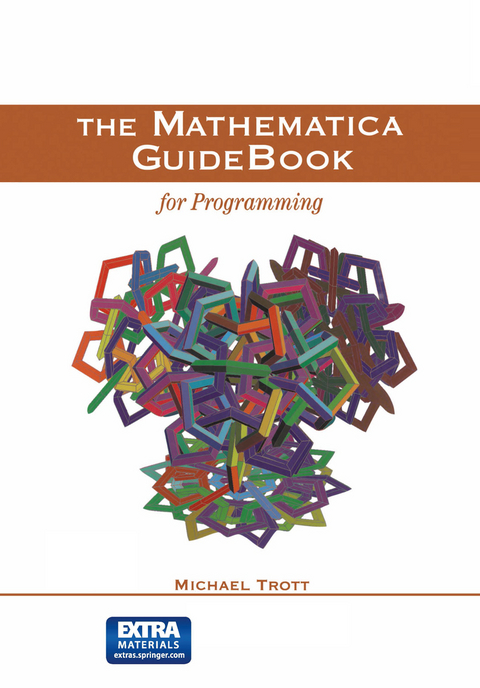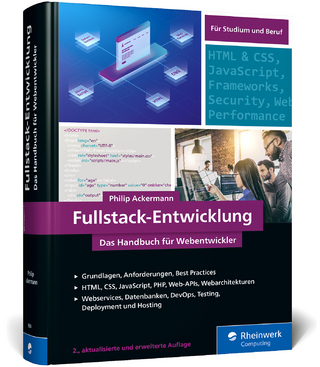
The Mathematica GuideBook for Programming
Springer-Verlag New York Inc.
978-1-4612-6421-7 (ISBN)
The Mathematica Guidebook for Programming provides a comprehensive, step-by-step development of Mathematica programming capabilities and contains an enormous collection of examples and worked exercises. It guides the reader to become fluent in the structure of Mathematica expressions, expression evaluation, pure and named functions, and in procedural, rule-based, and functional programming constructs. Each Mathematica function is discussed in detail, explained in numerous examples. The programs for this book are available to download at the link below:
http://extras.springer.com
Unique Features:
* Step-by-step presentation of Mathematica functions assuming no prior Mathematica programming experience
* Clear organization, complete topic coverage, and an accessible writing style for both novices and experts
* Detailed discussion of procedural, rule-based, and functional programming
* Hundreds of worked examples, illustrations, programs, and fully worked self-study exercises for understanding concepts and learning how to solve real-life problems
* Website for book with additional materials:
http://www.MathematicaGuideBooks.org
Michael Trott is a symbolic computation and computer graphics expert. He holds a Ph.D. in theoretical physics and joined the R&D team at Wolfram Research in 1994, the creators of Mathematica. Since 1998, he has been leading development of the Wolfram Functions Site http://functions.wolfram.com, which currently features more that 80,000 formulas and identities, and thousands of visualizations.
1. Introduction to Mathematica
2. Structure of Mathematica Expressions
3. Definitons and Properties of Functions
4. Meta-Mathematica
5. Restricted Patterns and Replacement Rules
6. Operations on Lists, and Linear Algebra
From the reviews:"This volume is the first one in a series of four books on the Mathematica programming language. It is best suited for those who … want to learn the sophisticated tricks of the advanced programming and to use Mathematica up to its full capacity. … The book addresses many features of human-computer interaction. … This book is one of the most valuable sources for the advanced users of Mathematica. … all the science/engineering/computer science/mathematics libraries should have this book and its companion volumes." (Matti Vuorinen, Zentralblatt MATH, Vol. 1080, 2006)"The Mathematica GuideBook for Programming provided this reviewer with insights into solving and visualizing problems by using Mathematica … . Its wealth of exercises, annotated solutions and integrated bibliographic references should make this set a valuable part of the library of any Mathematica user. I highly recommend it." (Marvin Schaefer, MathDL, August, 2006)"On the whole, the programming GuideBook provides a comprehensive, step-by-step development of Mathematica programming capabilities and contains an impressive collection of examples and worked exercises. Key Mathematica functions are discussed in detail, using interesting examples and put to the test in real programs." (Willy Hereman, SIAM Review, Vol. 47 (4), 2005)
| Zusatzinfo | XXXVIII, 1028 p. |
|---|---|
| Verlagsort | New York, NY |
| Sprache | englisch |
| Maße | 178 x 254 mm |
| Themenwelt | Mathematik / Informatik ► Informatik ► Programmiersprachen / -werkzeuge |
| Mathematik / Informatik ► Informatik ► Theorie / Studium | |
| Mathematik / Informatik ► Mathematik ► Analysis | |
| Schlagworte | algorithms • Complexity • Computer • Computer Algebra • Computer Graphics • Mathematica • programming • Programming language • Visualization |
| ISBN-10 | 1-4612-6421-9 / 1461264219 |
| ISBN-13 | 978-1-4612-6421-7 / 9781461264217 |
| Zustand | Neuware |
| Informationen gemäß Produktsicherheitsverordnung (GPSR) | |
| Haben Sie eine Frage zum Produkt? |
aus dem Bereich


